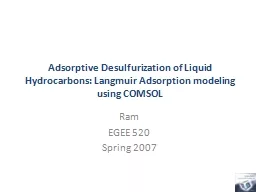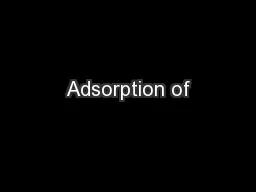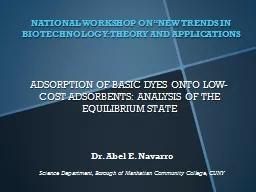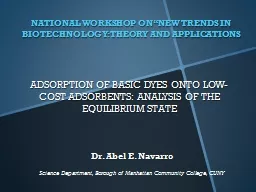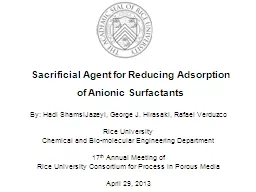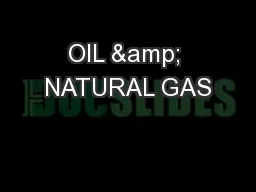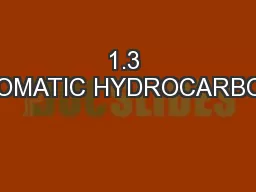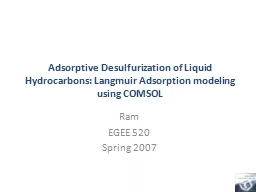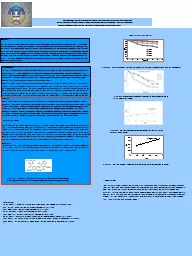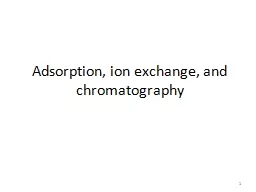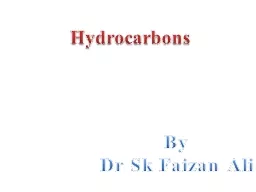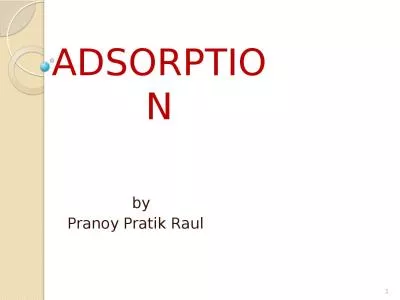PPT-Adsorptive Desulfurization of Liquid Hydrocarbons: Langmuir Adsorption modeling using
Author : faustina-dinatale | Published Date : 2019-11-23
Adsorptive Desulfurization of Liquid Hydrocarbons Langmuir Adsorption modeling using COMSOL Ram EGEE 520 Spring 2007 Introduction Adsorption area of interest Simplicity
Presentation Embed Code
Download Presentation
Download Presentation The PPT/PDF document "Adsorptive Desulfurization of Liquid Hyd..." is the property of its rightful owner. Permission is granted to download and print the materials on this website for personal, non-commercial use only, and to display it on your personal computer provided you do not modify the materials and that you retain all copyright notices contained in the materials. By downloading content from our website, you accept the terms of this agreement.
Adsorptive Desulfurization of Liquid Hydrocarbons: Langmuir Adsorption modeling using: Transcript
Download Rules Of Document
"Adsorptive Desulfurization of Liquid Hydrocarbons: Langmuir Adsorption modeling using"The content belongs to its owner. You may download and print it for personal use, without modification, and keep all copyright notices. By downloading, you agree to these terms.
Related Documents

